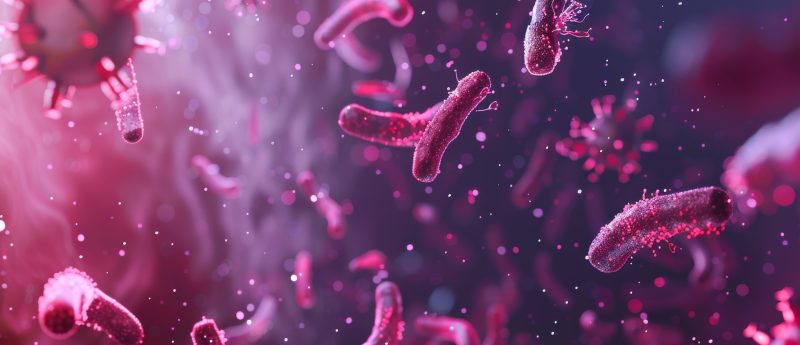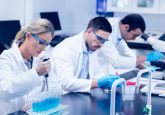Webinar Q&A transcription and follow-up: ‘Biosimilars by LC-MS: a single ‘reagent-free’ method’

Thank you everyone who attended the live webinar ‘Biosimilars by LCMS: a single ‘reagent-free’ method’. Below is a transcription of the Q&A session held during the webinar, as well as responses to the questions posed during the live event that we did not have time to answer. We hope this is a useful resource and thank our webinar attendees and our speaker, Jonathan St-Germain (Algorithme Pharma), for their time.
The following is a transcription of the Q&A session.
1. In an LBA–LC-MS hybrid assay, how do you control for potential variability introduced in the immunoprecipitation step?
This is an issue that at times we struggle with depending on the analyte that we’re looking at. Of course, the ideal internal standard (IS) would be a heavy-labeled IS that mimics the analyte of interest and that can be used as early as the immunoprecipitation step in order to track any potential variations during sample handling.
If such an analyte is not available – and they rarely are because if you’re starting with a large protein it’s very rare that you’ll have a heavy-labeled IS – we go with the next best thing. Analogues, for example, in the case of the pegylatyed protein I talked about today, is a very close analogue to the human growth hormone, so we can use sequences from the human growth hormone that are distinct from the pegvisomant in order to control sample processing. Of course, you wouldn’t be able to do that using an anti-PEG antibody, but for example we could switch to an antihuman growth hormone antibody and then process the sample in this manner.
But another way in which we ensure or increase our odds of being reproducible during sample handling is by using an automated robot in order to process all these samples at once. It’s a 96-well plate type of setup, which allows even sampling of all these immunoprecipitations – so that has helped a lot. And ultimately the QC samples will serve as measures of reproducibility to ensure data reliability.
2. Do you typically monitor one or multiple peptides when quantifying proteins?
This is a good question that is being debated to some extent in the field right now. I think the general consensus is that the more the better, but we have to keep in mind that every time we add a peptide to the analysis it’s like adding an extra analyte to the methods. And so we have to balance the number of peptides that we follow with the extra time and energy that it would take to develop the methods.
Ultimately even if we do follow multiple peptides this would not guarantee that we are following the intact molecule. For example, if the molecule is cleaved but not yet metabolically degraded, then the reagent-free quantification would not reveal differences in the levels of multiple peptides. So unless very early on the breakdown products follow different degradation kinetics, we would obtain the same concentration values for multiple peptides.
3. If no differences are observed between biosimilars, does this imply that differences are not present?
There is an old adage in MS that says that the absence of evidence is not evidence of absence, and so we can’t speculate on what we don’t observe. What we can do, however, is define the parameters and the limits of our technology and state that within these limits the proteins are either similar or dissimilar, what we observe we can state on. Other than that of course we do our best to be as comprehensive as possible to cover as much as possible of the physical and chemical properties of the analytes but obviously we can’t speculate on what we don’t observe. For a very complete and thorough analysis we can always add other technologies to assess similarities. But at least within the criteria we provide we can state on what we’ve seen.
4. Do different binding affinities to immunocapture reagents between biosimilars exclude the use of a hybrid LBA–LC-MS approach?
I would say that not necessarily, but it depends on the extent of the affinities. Of course, if the differences between the biosimilar and innovator are such that the antibody recognizes one and not the other, then obviously you have a problem if going with immunocapture. But if it’s just a matter of higher or lower affinity within a reasonable range, then theoretically you can adjust your assay: add more antibody or increase incubation time, to make sure that you capture everything. If the affinities are different but in the end you deplete you sample from your analyte, then you‘re probably in the safe zone.
5. Which HRMS was used for quantitation and characterization?
The high-resolution instrument that was used was a triple-TOF-MS operated in high resolution mode.
6. Peptide mapping establishes the 1D structure of a protein. Can you infer on 3D structure by LC-MS?
When I was talking about structure I was mostly referring to primary structure. The term is correct, you can infer to some extent on the 3D structure, but by no means am I claiming that MS is anywhere close to being a substitute for X-ray crystallography or NMR spectroscopy, for example.
7. What would be the confidence level if you were to perform quantification (bioanalytical studies) with HRMS?
When I observe a curve that is linear with a strong R2 value, and QC samples that are read on curve, then I wouldn’t doubt the method. So it’s a matter of tuning the instrument and using its parameters in order to obtain confidence in the reliability of your data. So whether you’re using a high-resolution instrument or a low-resolution triple-quad, for example, your data ultimately will tell you how confident you are in your assay.
8. Do you use microflow LC or UPLC typically to meet you LLOQ requirement?
Yes, we use either of these methods depending on the needs. Microflow can help in some instances; it’s always a trade-off of the volume of sample that you analyze versus the sensitivity that you get. It’s very closely related to the background that you have in your sample. For example, if I have an immunocapture-based assay the chances of having lower background are much better than a reagent free assay. Of course, that’s a case-by-case analysis that needs to be done as well. We use whatever LC method that is most appropriate to achieve the sensitivity that we need to.
The following are responses to unanswered questions posed during the live event.
1. What was your injection volume onto the Q-TOF for Rituximab?
5 µl
2. Can you share which Q-TOF you used?
Ab Sciex TripleTOF5600TM
3. Have you also looked at Sequence Variant analysis using LC-MS?
We haven’t performed Sequence Variant analysis for this project.
4. What would be your confidence level if you were to perform quantification (bioanalytical studies) with HRMS?
Our confidence level will be high if all controls (Calibrants, QCs, IS stability, ISR, …) are within acceptance criteria. With a properly calibrated instrument, data in HRMS is reproducible and accurate.
5. Regarding the PK measurement using the reagent-free method, is it still possible to observe potential immunogenicity (i.e. neutralizing monoclonal antibodies more than increase of clearance) with the PK profile? Could you please comment on this?
The LC-MS reagent-free approach allows you to circumvent potential interferences from immunogenicity-related anti-drug antibodies (ADAs) on the accuracy of a PK profile. However, analysis of a PK profile would not allow the observation of immunogenicity. Direct quantification of anti-drug-antibodies (ADAs) would constitute a better approach to assess immunogenicity.
6. How many biologics assays have you developed? What percentage of these assays are reagent- free?
We have developed several assays for the quantification of biologics by LC-MS. Approximately 70% of our assays are reagent-free. Obviously, the choice of the approach (reagent-free or affinity enrichment) highly depends on the LLOQ to reach and/or the objective of the study.
7. For PK measurement, what do you measure using the LC-MS approach, free drug or total drug?
Is it possible to develop an assay measuring one or the other form of the drug?
Either measurement can be obtained. Which fraction we measure will depend on how the samples are processed.
8. In the first antibody quantification case study, protein was recovered after precipitation and centrifuge. Could you provide a bit of detail about what reagent was used and how the precipitated protein was recovered?
Plasma proteins including spiked Rituximab were precipitated with methanol and pellet re-suspended with 0.25% n-octyl glucopyranoside (OGP) in ammonium bicarbonate buffer prior to reduction-alkylation-digestion steps.
9. Have you done any comparisons with ligand binding assays (LBAs) in quantification?
Not directly. Comparisons have been limited to data for common analytes in common matrices for our LC-MS methods versus published LBA methods.
10. Have you observed biosimilars that have similar PK/PD and efficacy profiles but very different LC-MS characterization profiles compared to the original drug? If that is the case, would this still be considered bio-similar?
To this day, criteria for biosimilarity have been mostly restricted to clinical parameters similarities (route of administration, dosage, safety, potency, etc.). Of course, completely different compounds may have similar PK profiles, which would not necessarily make these compounds biosimilars. When and how will the line be drawn regarding biosimilarity? For example, regarding sequence analysis, how many mismatching amino acids between two compounds before we stop considering them biosimilars? How different can glyco-profiles of two antibody drugs be until they are considered too different to be similar? This question will likely be a major point of discussion as more and more biosimilar compounds are developed.
To view the webinar on demand click here.






